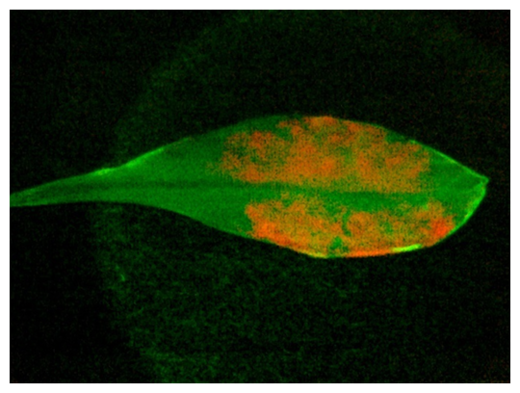
Call it the rise of the nanobionic super-plants: Researchers at MIT are giving plants super powers by placing tiny carbon nanotubes deep within their cells.
Some of the altered plants increased their photosynthetic activity by 30% compared with regular old plants. Others were able to detect tiny traces of pollutants in the air.
And that's just the beginning.
"The idea is to impart plants with functions that are non-native to them," said Michael Strano, professor of chemical engineering at MIT.
Strano's lab has been working at the nexus of plant biology and nanotechnology -- an area called plant nanobionics -- for three years, trying to figure out how to give plants new abilities.
Their first challenge was getting the nanotubes into the plants. Watering plants with a solution that had nanoparticles in it seems to be the obvious choice, but it doesn't work because plant roots have a structure that blocks nanotubes from entering.
Instead, Strano's team turned to the stomata -- small pores on the underside of leaves that let carbon dioxide in and oxygen and water out. The researchers found that if they pressurized a solution that included nanoparticles in a syringe, it would enter the plant through the stomata.
"It is surprising that it worked because leaf is designed to be a very selective membrane," Strano said. "Usually water evaporates out of the leaf through the stomata, but here it is going the other way."
The next step was to get the nanotubes into the chloroplast, an organelle inside a plant cell where photosynthesis takes place. To do this, the team wrapped them in a polymer that sticks to the lipid bubble that surrounds the organelle. It worked like a charm. The lipid bubble let the nanotubes right in, without tearing or leaving a hole where they entered.
After the delivery system was worked out, the researchers could play a little. To increase photosynthetic efficiency, they added nanotubes that can absorb more wavelengths of light than plants usually absorb. Tests revealed it was effective, but the researchers still need to learn exactly why it worked.
The team also tried putting carbon nanotubes that can detect the gas nitric oxide in the plant. If the plant encountered the gas, some of the the nanotubes inside it would fluoresce a different color. Different types of nanotubes embedded in plants could eventually alert us to pollutants, pesticides or fungal diseases in the air around us.
Strano said his team now is working on showing how nanobionics can create plants with even more exotic functions -- perhaps plants that can sense multiple chemicals or even multiple objects.
"There's a lot more coming," he said.
This research was published in the journal Nature Materials. The lead author of the paper was plant biologist Juan Pablo Giraldo, a postdoctoral scholar in Strano's lab.



Why would you want to inject plants with non-organic substances?
These 'scientists' are screwing with everything they can possibly screw with, totally unconstrained by anyone or anything.